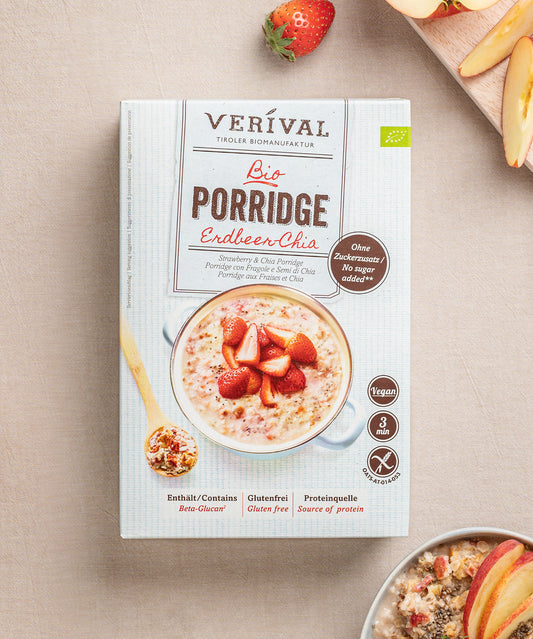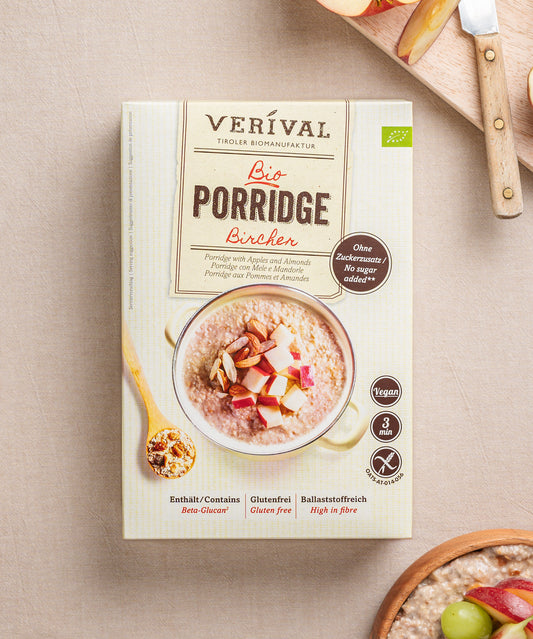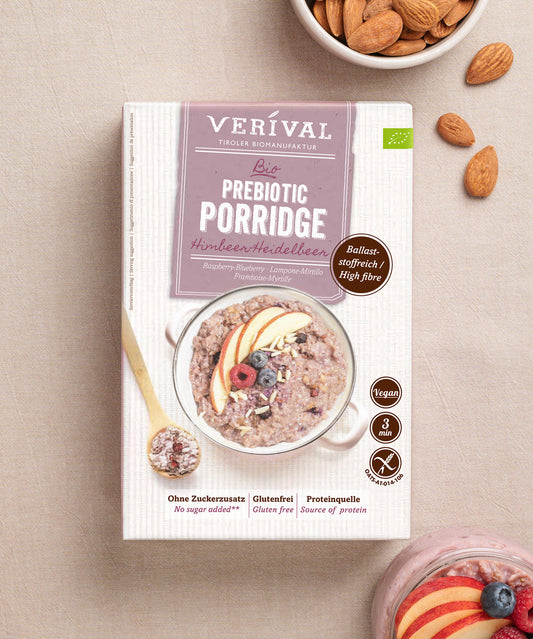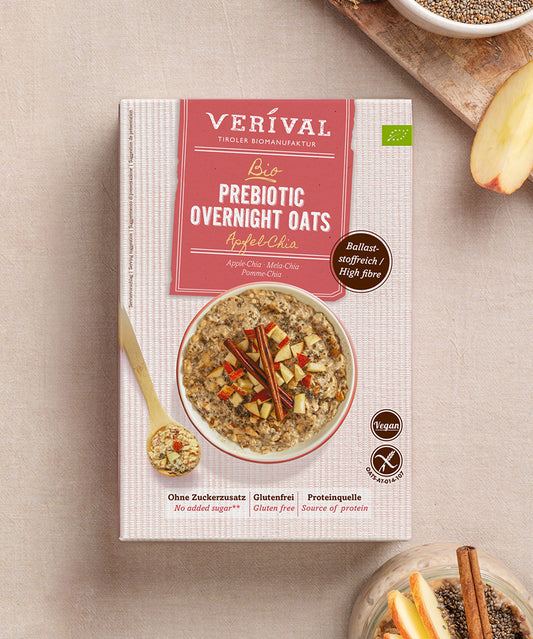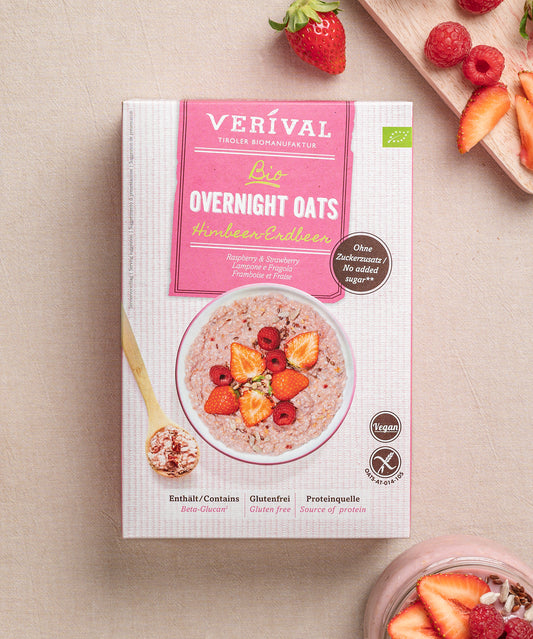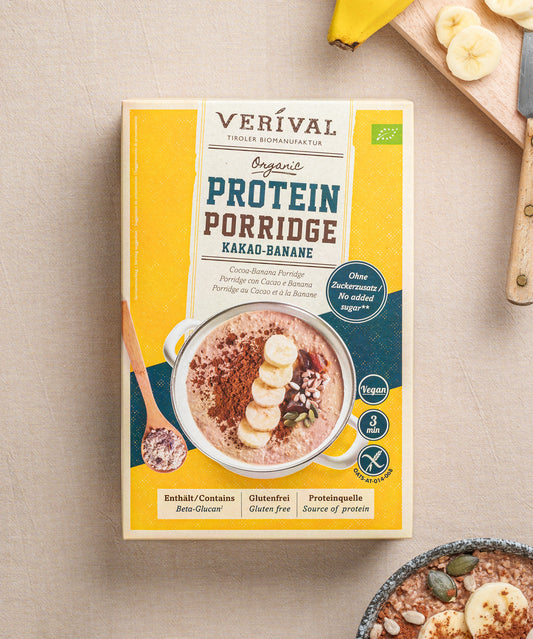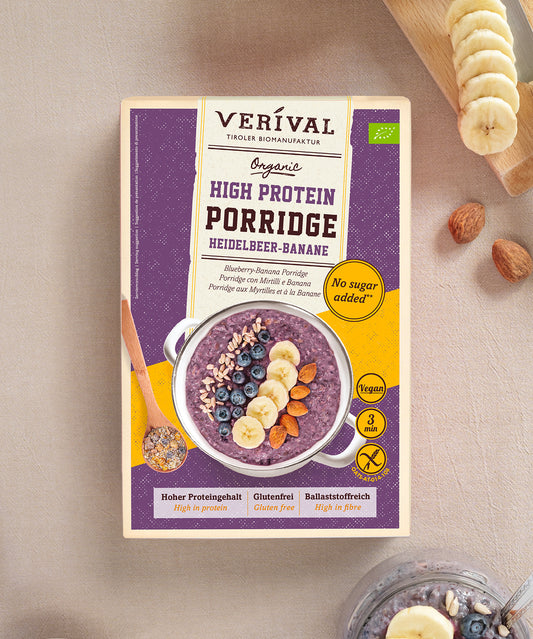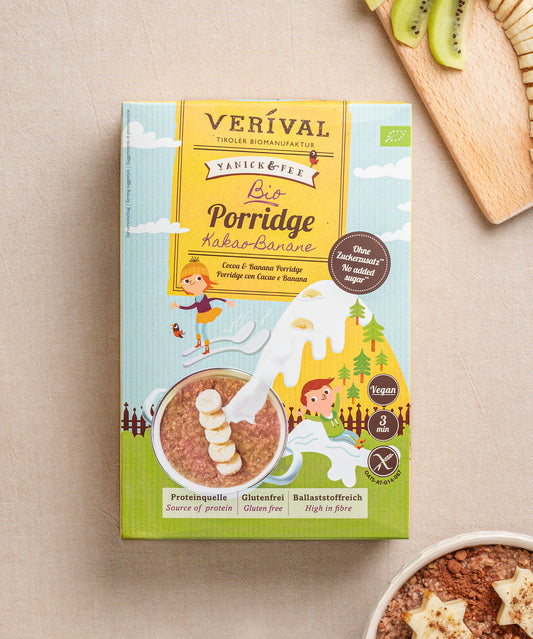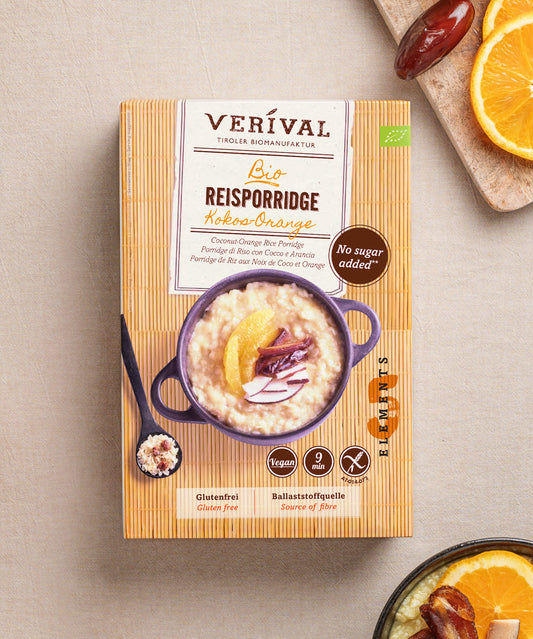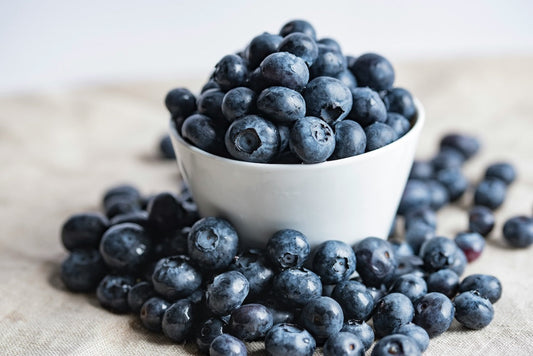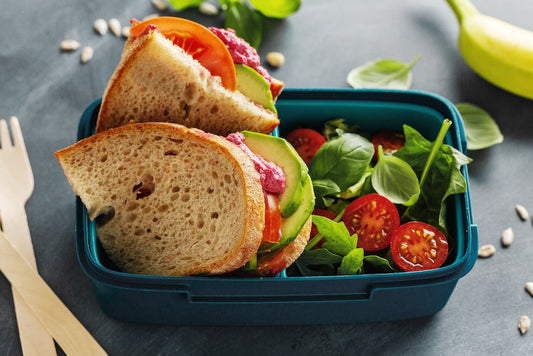Many people suffer from digestive problems such as bloating, abdominal pain or irritable bowel syndrome. FODMAPs – a group of short-chain carbohydrates that are poorly broken down or not broken down at all in the intestines – could be one possible cause. The low FODMAP diet has proven to be extremely effective in alleviating these symptoms. In this article, you will learn what exactly the low FODMAP diet is, how it works and why it might be interesting for you.
Verival Muesli without added sugar – Try it now
What exactly is the low FODMAP diet?
The low FODMAP diet is based on reducing certain fermentable carbohydrates that are difficult to digest. FODMAP stands for fermentable oligosaccharides, disaccharides, monosaccharides and polyols. These are found in various foods and can trigger unpleasant symptoms such as bloating, abdominal cramps or diarrhea in sensitive people.
What are FODMAPs?
Oligosaccharides: These are mainly found in wheat, rye, onions and garlic.
Disaccharides: The best-known example is lactose, which is found in dairy products.
Monosaccharides: Fructose, which is found in fruits such as apples and honey, belongs to this group.
Polyols: These sugar alcohols are found in stone fruit such as cherries and plums, but also in some vegetables and artificial sweeteners.
Why are FODMAPs problematic?
FODMAPs draw water into the small intestine, which can cause diarrhea. At the same time, they are fermented by bacteria in the large intestine, which can cause bloating and pain. For people with irritable bowel syndrome or other digestive issues, the low FODMAP diet is a targeted way to alleviate these symptoms.
How does the low FODMAP diet work?
The low FODMAP diet is divided into three phases, which are carried out systematically to find out which FODMAPs trigger individual symptoms.
Phase 1: Elimination Phase
In the first phase, you eliminate all foods that are high in FODMAPs. This phase usually lasts 4 to 6 weeks and aims to alleviate the symptoms. You should avoid foods such as wheat products, dairy products, certain fruits and vegetables, and sugar alcohols.
Phase 2: Reintroduction Phase
After the elimination phase, you will gradually reintroduce the different FODMAP groups. In doing so, you will systematically test which foods trigger symptoms in you and which you can tolerate well. Each FODMAP group is tested separately over a few days so that you can clearly see what your body can tolerate.
Phase 3: Personalization phase
In this phase, you will create a personalized nutrition plan based on your individual tolerances. The goal is to make your diet as varied as possible without causing unnecessary discomfort. The low FODMAP diet is not a permanent solution, but helps you to develop a long-term diet tailored to you.
The health benefits for the body
A low FODMAP diet offers numerous health benefits, especially for people with irritable bowel syndrome and other digestive disorders.
Relief from digestive discomfort
By reducing FODMAP-rich foods, symptoms such as bloating, diarrhea, and abdominal pain can be significantly reduced. Many sufferers report that their quality of life improves greatly after just a few weeks.
Improved gut health
The low FODMAP diet not only helps with acute symptoms, but also promotes long-term healthy bowel function. By learning which foods support your digestive system and which do not, you can avoid future discomfort and balance your intestinal flora.
More energy and well-being
A balanced gut affects your overall well-being. Many people report increased energy, better concentration and an overall better quality of life after a successful FODMAP diet. This is because the body can work better with less stress on the digestive system.
Why try the low FODMAP diet at all?
If you suffer from frequent digestive issues, the low FODMAP diet could be just the thing for you. But even for people without diagnosed digestive issues, this diet offers some interesting benefits.
A targeted approach to irritable bowel syndrome
Irritable bowel syndrome (IBS) is one of the most common digestive disorders worldwide. The low FODMAP diet was developed specifically for people with IBS and has been shown to be particularly effective. Studies show that up to 75% of people with IBS experience significant improvement in their symptoms with this diet.
A personalized diet
The low FODMAP diet is not a “one-size-fits-all” solution. Since everyone reacts differently to FODMAPs, the diet is designed to develop an individually adapted diet. You learn which foods you can tolerate well and which you cannot, and can adapt your diet accordingly in the long term.
Promoting a healthy diet
By making you more aware of the foods you eat, the low FODMAP diet also promotes a healthier diet in general. You avoid highly processed products and sugar and incorporate more fresh, unprocessed foods into your diet. Another important part of a healthy diet is the integration of sports and exercise – this can also help you to prevent many unpleasant intestinal complaints.
The best recipes for the FODMAP diet
Now that you know how the low FODMAP diet works, it's time to try out some simple and delicious recipes. The following recipes are all low in FODMAPs and are perfect for the different phases of the diet.
Breakfast: Low FODMAP Smoothie Bowl
Ingredients:
1 ripe banana (only small amounts tolerated)
100 g lactose-free yogurt
1 handful of strawberries
1 tablespoon of chia seeds
2 tablespoons of oats (gluten-free)
1 teaspoon of maple syrup (optional)
Preparation:
Blend the banana, lactose-free yogurt, and strawberries in a blender until smooth. Put the mixture in a bowl and sprinkle with chia seeds and oats. Add a dash of maple syrup to taste.
Breakfast: low FODMAP porridge with berries
Ingredients:
50 g gluten-free oats
200 ml unsweetened almond milk
1 tbsp chia seeds
1 handful blueberries
1 tsp maple syrup (optional)
Preparation:
Heat the oats and chia seeds in a small saucepan with the almond milk. Bring to the boil, stirring constantly, and simmer on a low heat for 5 minutes. Garnish with blueberries and maple syrup and serve.
Lunch: Low FODMAP shrimp and rice stir-fry
Ingredients:
150 g shrimp (fresh or frozen)
100 g basmati rice
1 red bell pepper
1 zucchini
1 tablespoon olive oil
1 tablespoon gluten-free soy sauce
1 tablespoon lime juice
Fresh herbs such as parsley or cilantro
Preparation:
Cook the basmati rice according to the instructions on the packet. Meanwhile, fry the prawns briefly in olive oil until they are cooked through and set aside. Finely chop the pepper and courgette and fry in the same oil until the vegetables are lightly browned. Add the cooked rice and the prawns, season with soy sauce and lime juice and mix briefly. Sprinkle with fresh herbs and serve.
Lunch: Low FODMAP quinoa salad with chicken
Ingredients:
100 g quinoa
150 g chicken breast
1 red bell pepper
1 handful of arugula
2 tablespoons olive oil
1 tablespoon lemon juice
salt and pepper
Preparation:
Cook the quinoa according to the instructions on the packet and leave to cool. Cut the chicken breast into strips and fry in a pan with olive oil. Dice the pepper and place in a bowl with the rocket and chicken. Season with lemon juice, olive oil, salt and pepper.
Dinner: Stuffed peppers with quinoa and feta
Ingredients:
2 large peppers (red or yellow)
100 g quinoa
50 g lactose-free feta
1 small zucchini
1 handful spinach
1 tbsp olive oil
salt and pepper
1 tsp paprika
Preparation:
Cook the quinoa according to the instructions on the packet and set aside. Finely chop the zucchini and fry in olive oil until soft. Add the spinach and steam briefly. Crumble the lactose-free feta and mix with the quinoa and vegetables. Season with salt, pepper and paprika powder. Cut the top off the peppers, remove the seeds and fill with the quinoa mixture. Place the stuffed peppers in a baking dish and bake in a preheated oven at 180°C for about 20-25 minutes until they are soft. Serve warm and enjoy!
Dinner: salmon with steamed vegetables
Ingredients:
200 g salmon fillet
1 zucchini
1 carrot
1 tablespoon olive oil
Juice of half a lemon
Salt and pepper
Preparation:
Marinate the salmon with olive oil, lemon juice, salt and pepper. Cut the zucchini and carrots into thin strips and steam them in a pan with a little water. Fry the salmon in a separate pan or cook in the oven at 180 degrees for about 12 minutes. Serve with the vegetables.
Low FODMAP combinations for healthy digestion
A balanced combination of low FODMAP foods will help you to maintain healthy digestion while also getting enough nutrients. Here are some food combinations that are particularly suitable for the low FODMAP diet.
Vegetables and proteins
One simple and effective combination is vegetables with a source of protein such as chicken, fish or tofu. Make sure to choose low-FODMAP vegetables such as zucchini, spinach, carrots or peppers.
Whole grain products and healthy fats
Gluten-free, fiber-rich whole grain products such as quinoa or oats combined with healthy fats such as avocado or olive oil provide important nutrients while also supporting digestion.
Discover the full range of Verival breakfast options now!
Conclusion: Does the low FODMAP diet really help?
The low FODMAP diet offers a targeted approach to relieving digestive discomfort such as bloating, abdominal pain and diarrhea, especially for people with irritable bowel syndrome. By gradually eliminating and reintroducing foods high in FODMAPs, you can find out which foods you can tolerate well and which you should avoid.
What makes this diet so special is that it doesn't aim for general abstinence, but rather helps you develop an individual diet that ensures greater long-term well-being. With the right recipes and balanced combinations, the low FODMAP diet can be easily integrated into your daily routine. Although this diet requires a little planning at the beginning, it is worth the effort. You will not only improve your digestion, but also your overall quality of life by reducing symptoms and better understanding your body.


